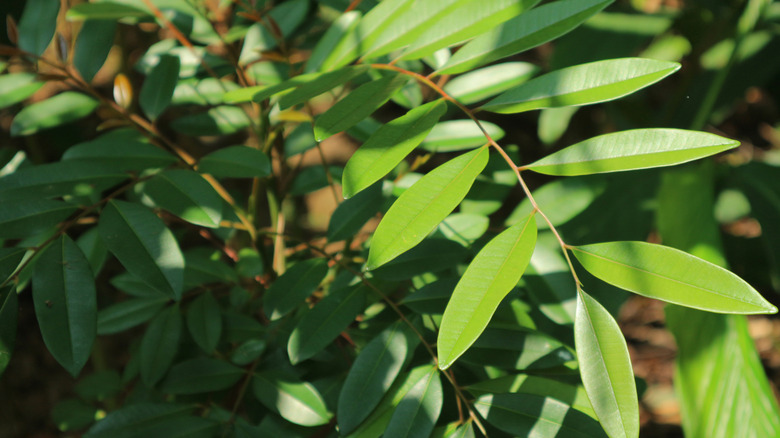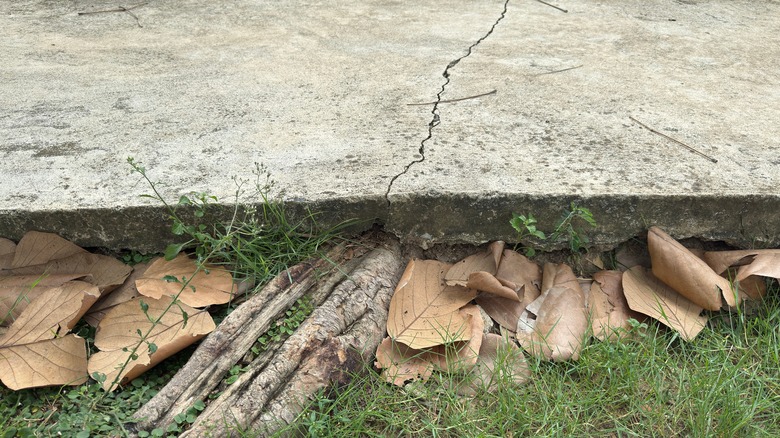What To Do Before The Paradise Tree In Your Yard Becomes A Hazard
A common feature in Florida landscaping, the paradise tree (Simarouba glauca) boasts shiny leaves and interesting-looking purple fruit — but gardeners beware, as this tree can be more trouble than it's worth. The tree can grow up to about 50 feet and has some beneficial characteristics, among them that it discourages soil erosion and supports nearby underground microbial life. While it is native to Florida and the Keys — it's not invasive — the paradise tree does pose some potentially troublesome problems to gardeners.
Paradise trees have shallow root systems, which means that their roots often end up popping through the ground. This can become an issue when the tree is planted too closely to sidewalks or driveways, and while it may seem like an easy fix, cutting the roots isn't safe to do. In addition, in order to protect itself from the high winds that come with the hurricanes common in its native state, the paradise tree is known for easily dropping small branches — a nuisance for those who like to keep a tidy yard. The paradise tree's purple fruits can also easily stain sidewalks. Of course, if all of these drawbacks prove to be more of a hassle than you'd like to deal with, you can always remove the tree. But there are other ways to ameliorate the issues that come with paradise trees.
Root barriers can help deal with paradise trees
One of the main issues with paradise trees is their surface roots. When these roots spring up from the ground, they can easily crack pavement, making sidewalks and driveways hard to navigate — warped and broken paths can quickly become a safety and accessibility hazard. If you've decided you'd like to keep your paradise tree and just deal with the surface roots, there are several steps you can take to alleviate the issue.
If your paradise tree's surface roots are simply an eyesore amidst your grass, try covering them with a two-inch layer of topsoil and grass seed. You shouldn't cover exposed roots with too much soil, though; otherwise, you'll risk suffocating the roots. Consider shade-tolerant ground cover or mulch as an alternative to areas where growing grass is tricky. If the roots of your paradise tree have already begun cracking your pavement, try rerouting the sidewalk an appropriate distance from the tree — give larger trees about 10 feet of space or more. However you decide to deal with the shallow roots, avoid pruning or cutting the roots. This could lead to problems that will eventually kill the tree.
If you're considering planting a paradise tree, make sure you plant it at least 10 feet from the nearest pavement. Root barriers can encourage shallow roots to grow deeper so that you don't wind up with protruding roots. In fact, installing root barriers is an essential step that you shouldn't skip when planting any tree.

